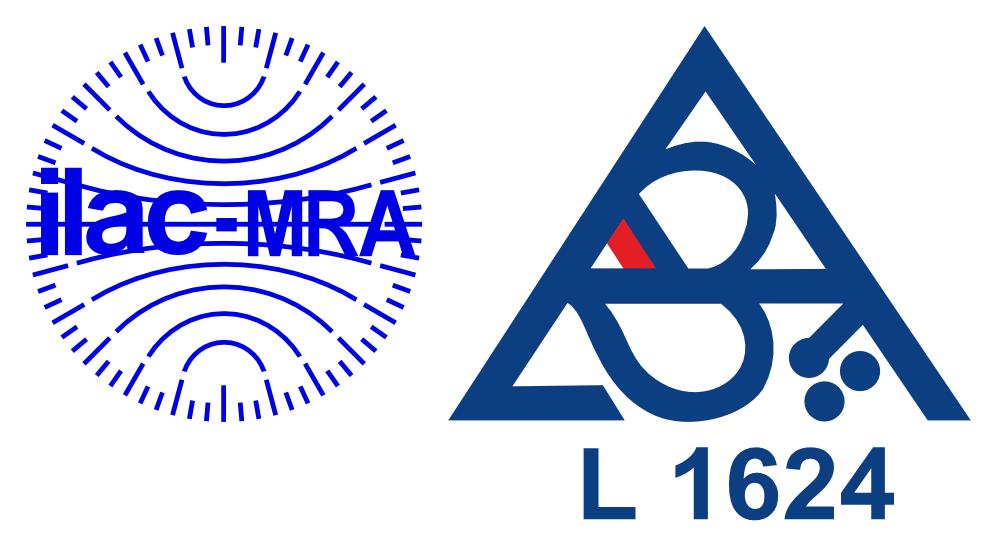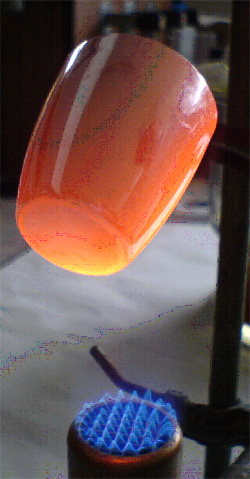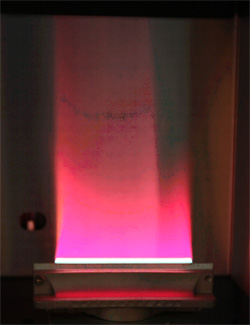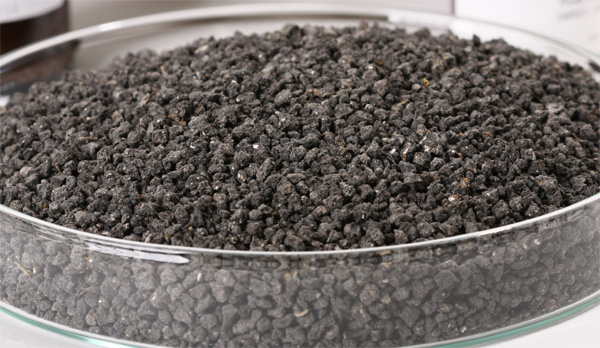Testing Analytical Laboratory
Testing Analytical Laboratory Radlík
 Testing Analytical Laboratory Radlík is a part of Analytika®, spol. s r.o. accredited by the Czech Accreditation Institute according to the standard CSN EN ISO/IEC 17025:2018, Certificate of Accreditation No. L1624. The aim of accreditation, successfully completed in January 2012, are selected primary methods, volumetric and gravimetric, used for quality control purposes of our aqueous calibration solutions, certified reference materials Astasol®. In 2019 the accreditation was renewed and the scope of accreditation was extended.
Testing Analytical Laboratory Radlík is a part of Analytika®, spol. s r.o. accredited by the Czech Accreditation Institute according to the standard CSN EN ISO/IEC 17025:2018, Certificate of Accreditation No. L1624. The aim of accreditation, successfully completed in January 2012, are selected primary methods, volumetric and gravimetric, used for quality control purposes of our aqueous calibration solutions, certified reference materials Astasol®. In 2019 the accreditation was renewed and the scope of accreditation was extended.
Aqueous calibration solutions are produced by weight from the purest primary substances available on the domestic and foreign markets in accordance with The Certification Report on Production of Certified Reference Material, Aqueous Calibration Solution Astasol®.
Testing Analytical Laboratory Radlík was established in 2010 as a control unit designed to verify the quality of Analytika®, spol. s r.o. products. As mentioned above, the preparation of some of our company's products of high quality and a considerable potential for use in analytical laboratories (domestic and foreign) is guaranteed by accreditation ČSN EN ISO 17034. Despite the already established and very precise product control in the manufacturing unit of Analytika®, spol. s r.o. it was necessary (taking into account the requirements of our customers and users of CRM in general) to separate the process of quality control and provide the space, time and experience of our specialists for the separate and independent control unit, Testing Analytical Laboratory Radlík, meeting all requirements for control laboratories.
Primary Methods
Primary methods are the first methods used in quantitative analytical chemistry. Despite the ongoing development of instrumental analytical methods, primary methods haven't lost their importance even today. The aim of our several years study was to describe (using very specific examples of gravimetric and volumetric application of methods) the capability and advantages of primary methods for the determination and verification of declared analyte's mass concentration values in the set of aqueous calibration solutions Astasol®.
instrumental analytical methods, primary methods haven't lost their importance even today. The aim of our several years study was to describe (using very specific examples of gravimetric and volumetric application of methods) the capability and advantages of primary methods for the determination and verification of declared analyte's mass concentration values in the set of aqueous calibration solutions Astasol®.
For quality guarantee we consider the compliance or tightness between the declared and true value of the analyte mass concentration. This is given by preparing solutions using the purest primary and well defined substances available on domestic and foreign markets.
Each production step is clearly defined; the primary substance, weighing operation, element or compound dissolution in an appropriate medium, transfer into a volumetric flask (volume operations), in each point of production uncertainty is well defined and expressed. The aforementioned procedure is declared by The Certification Report on Production of Certified Reference Material Astasol®.
Why use primary methods?
Recently, a number of world renowned manufacturers of certified reference materials not only defined the purity of the starting material, but they also chose standard's quality control in several ways. The trend is to focus on the trace metal impurities in the primary substances used for aqueous solutions production and using this way to define the starting element/metal or compound as 99.999% or better (but often forgets the non-metallic impurities, for example adsorbed gases and moisture). In some cases it can also be difficult to find the primary substance which is well defined, the quality or content of the analyte must be verified. Moreover for some calibration solutions preparation, it is necessary to use a compound, which may not be sufficiently characterized.
Attention is therefore paid not only to the primary substance, but also to the control of the analyte nominal mass concentration value (quite often in combination with the determination of trace metal impurities using some instrumental analytical method, ICP-OES, ICP-MS).
Determination of analyte mass concentration using primary method (at a sufficiently precise model with expanded combined uncertainty of less than 0.2% relative) should be understood as a "supporting procedure", which undoubtedly increases the total value of aqueous calibration solutions Astasol®.
The purpose of the excursion to the forties and fifties of the last century, when authors Antonín Jílek and Jan Koťa published a three-part publication Gravimetric Analysis and Electroanalysis and contributed significantly to the development of the primary methods in the field of quantitative analytical chemistry, was to explain, taking into account the specific application in our Testing Laboratory, the use and the benefit of primary methods at present.
Atomic absorption spectrometry
 Recently, we continue to study the capability and applicability of atomic absorption or emission spectrometry (taking into account uncertainty required) used for the determination of the analyte mass concentration in aqueous solutions Astasol®, but in this case preferably to multi-element solutions.
Recently, we continue to study the capability and applicability of atomic absorption or emission spectrometry (taking into account uncertainty required) used for the determination of the analyte mass concentration in aqueous solutions Astasol®, but in this case preferably to multi-element solutions.
Refering to the considerable selectivity of AAS and taking into account a non-selectivity of most volumetric and gravimetric methods, positive results have a great importance for the quality control of multi-element standards.
Our attention is paid, due to the principle of comparative methods, especially to the selection of calibration standards of high quality from renowned world-wide manufacturers that are internally analysed using primary methods, consequently to the selection of appropriate conditions of the determination, and last but not least, to the precision design of the whole analytical procedure.
Partial results in this area at present determined analyte mass concentration values of aqueous calibration solutions and their uncertainties using the bracketing technique, showing and confirming the capability of the method to work with the expanded combined uncertainty of 0.5% (relative).
Conductometry, pH
With the support of selected independent standards, some certified reference materials traceable to national standards, we use the method for checking the quality of our products, reference materials for determination of electrolytic conductivity or some buffers. Determination of conductivity or pH in real samples, i.e. samples with real matrix such as water, aqueous extracts of contaminated soils or sewage sludge, is commonplace.
Samples analyses
All of our used control procedures/methods are set up and validated to fulfill its purpose. In our case it is necessary to look at the intended use of those methods, rather than as an object of commercial analysing, but as already support and control procedure to verify the quality of our products.

The target of implementation these methods is not to compete with commercial laboratories, but to increase precision and minimize uncertainty of analytical measurements. Our Testing Analytical Laboratory has only one customer, which is a production unit of our company.
Technical support
If you have any questions relating to our Testing Analytical Laboratoty, regarding the control procedures/methods used, our products, or if you have another questions in the field of analytical chemistry, do not hesitate to contact us.
laborator@analytika.net
GSM: +420 605 253 726


